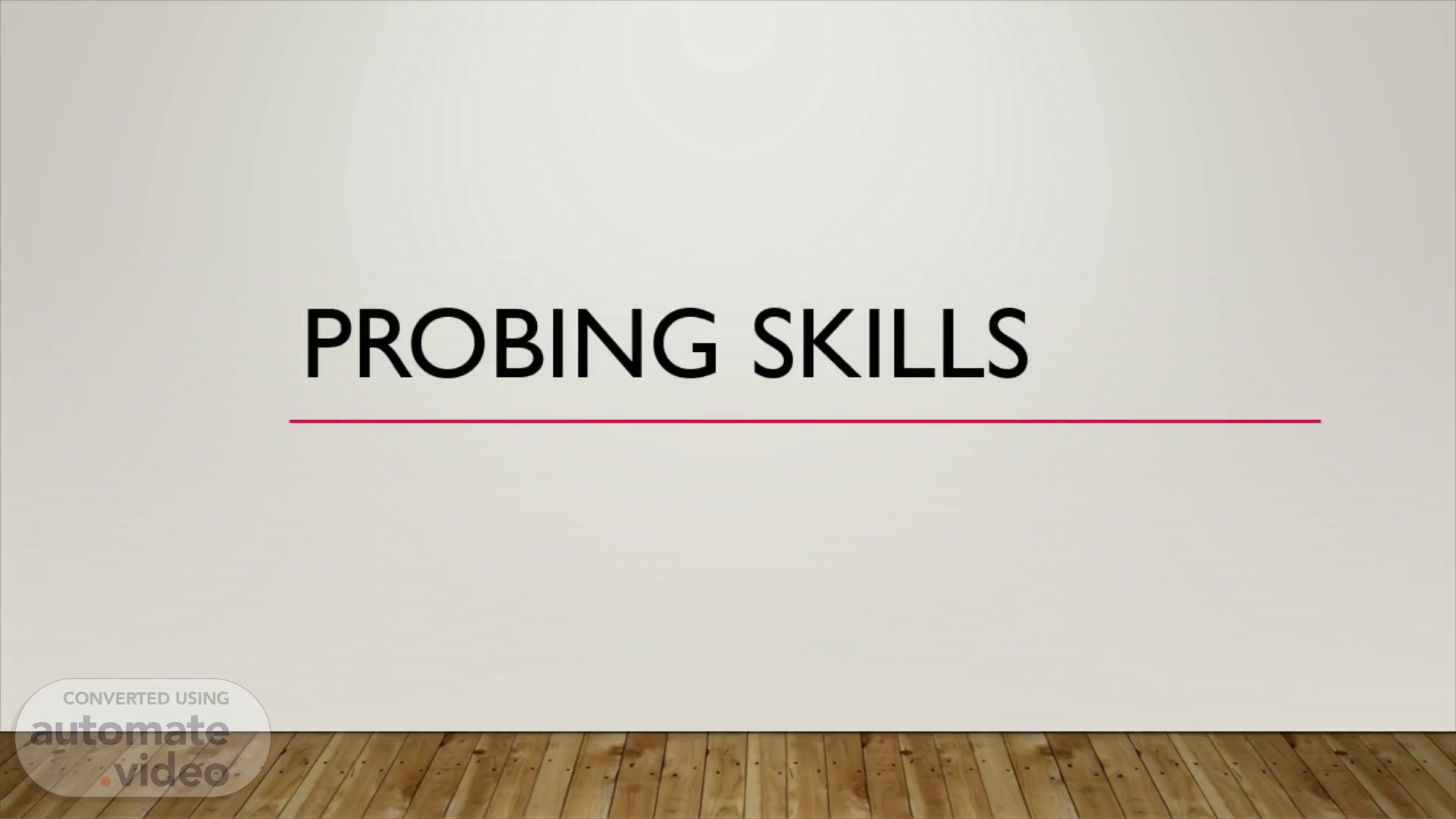Scene 1 (0s)
PROBING SKILLS.
Scene 2 (5s)
What is probing skill?. Probing is the skill of asking questions to get desired answer. Probing is asking specific questions to your customers to identify their needs, so you can address them with your product's solution..
Scene 3 (19s)
BUT WHY?. Helps to discover what your customer wants, what are his needs and why. To stimulate your customer’s interest towards the brand. To understand customer’s business details like type of practices, problems (if any), Helps to get your customer to talk about their personal opinions and feelings, Promotes critical thinking Helps your customer to open up and talk.
Scene 4 (38s)
WHEN TO DO PROBING?. When we do not fully understand a response When we want to obtain more specific or in-depth information When customer is not openly expressive about his opinion or intension towards the brand.
Scene 5 (51s)
Listen and to pay genuine attention This can help you to ask the ask the right question Correct timing is very important Do not interrupt the customer.
Scene 6 (1m 2s)
Types of probing?. Open probe - Asking open ended questions Closed probe - Asking closed ended questions.
Scene 7 (1m 10s)
[Audio] Difference between open and closed probe Cases of examples includes both closed and open probe.
Scene 8 (1m 30s)
Open ended probing. Asking for opinions: How do you feel about……? Asking for elaboration: What concerns do you have regarding……? What benefits do you look in …..? What do you like the best about……? 3 . Asking for information : What do you think is the major problem when you prescribe for your paediatric patients? According to you, what is the major reason for non-adherence of therapy?.
Scene 9 (1m 51s)
CLOSED PROBE. A closed-ended question refers to any question for which you provide the responder with options from which to choose a response. Closed-ended questions are sometimes phrased as a statement which requires a response. Types of Closed probe: Yes/No questions Agree/Disagree questions True/False questions.
Scene 10 (2m 7s)
[Audio] When to do open and cloed probe YES/NO AGREE/DISAGREE TRUE/ FALSE.
Scene 11 (2m 21s)
Example. MR - Sir, according to you, what are the reasons for non-adherence of the therapy? (OPEN ENDED QUESTION) Doc – There can be many reasons like cost, tablet size, taste, etc. MR – Sir as you said, that cost is one of the major reasons for non-adherence of the therapy, so would you like to prescribe the most economical brand of Cefpodoxime? (CLOSED ENDED QUESTION) Doc – Yes MR – Mankind presents the most economical brand of Cefpodoxime, (BRAND NAME).
Scene 12 (2m 44s)
THANK YOU.
